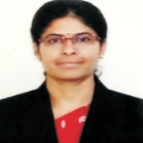International Journal of Intelligent Systems and Applications (IJISA)
IJISA Vol. 14, No. 3, 8 Jun. 2022
Cover page and Table of Contents: PDF (size: 938KB)
Power System Stability Improvement by LQR Approach and PSS Considering Electric Vehicle as Disturbance
Full Text (PDF, 938KB), PP.27-39
Views: 0 Downloads: 0
Author(s)
Index Terms
Power System, oscillations, damping, frequency, transmission system, interconnection
Abstract
Low frequency oscillations result due to heavy loading conditions line faults, sudden change of generator output and also due to poor damping of interconnected power systems. There are different types of disturbances in the power system like sudden change of load, generation, faults, switching of lines. This hampers the power transmission capacity of the lines and the stability of the system There are significant impacts on the system stability during the charging and discharging operation of Electric Vehicle (EV). In the present work the charging operation of EV is considered as a load disturbance. The introduction of these vehicles in the system creates the problem of low frequency oscillation and endanger the system stability and security. In the present work the Single machine infinite bus system (SMIB) is first developed using mathematical modelling with consideration of EV disturbance. The LQR approach from optimal control theory is then applied in the system to damp the system oscillations, improving the system eigenvalues and enhancing the stability. The stability is seen in the system after LQR from various figures. In the second work the plotting of variation of different state variables is done using three different methods which are the transfer function model method, using code and then using state space representation of the system. The work is further extended by adding Power system stabilizer (PSS) to the system, again considering the EV disturbance. The time domain simulation results showed the improvement in stability using PSS device. Thus, in the present work the oscillations problems created due to the introduction of electric vehicles are solved by two methods. The first is implementing LQR approach from optimal control theory in the system and the second method is by adding PSS device in the same system.
Cite This Paper
Niharika Agrawal, Mamatha Gowda, "Power System Stability Improvement by LQR Approach and PSS Considering Electric Vehicle as Disturbance", International Journal of Intelligent Systems and Applications(IJISA), Vol.14, No.3, pp.27-39, 2022. DOI:10.5815/ijisa.2022.03.03
Reference
[1] Abolfazl Jalilvand, Mohammad Reza Safari Tirtashi,” Design of Output Feedback Controller for PSS and TCSC by GA to improve the Damping of Power System Oscillations, “International Conference on Power and Energy, IEEE, pp.178-182,2010.
[2] M.W. Mustafa. MIEEE, Nuraddeen Magaji, Z. bint Muda,” TCSC Control of Power System oscillation and Analysis using Eigenvalue Techniques International Journal of Engineering & Technology IJET-IJENS Vol.09, Issue-10, pp. 37-43, December 2009.
[3] Rajasekhara Reddy Naguru, G V N Yatendra Babu, and Vaskar Sarkar,” A Comparative Study on LQR and H∞ Control for Damping Oscillations in Power System Network Considering Different Operating Points, IEEE ,2014.
[4] Nuraddeen Magaji, Mukhtar F. Hamza, Ado Dan-Isa, “Comparison of GA and LQR Tuning of STATIC VAR COMPENSATOR for damping Oscillations,” International Journal of Advances in Engineering & Technology, Vol. 2, Issue 1, pp. 594-601, Jan 2012
[5] Ali M. Yousef, Mohamed Zahran, Ghareeb Moustafa,” LQG Controller for Enhancement Power System Operation, “Journal of Electrical Engineering, pp.1-12. January 2015.
[6] Ali M Yousef, Ahmed M. Kassem, “Power System Stabilizer based on Robust H Infinity Controller for Low Frequency operating Range, “Research Journal of Applied Sciences, Engineering and Technology, Vol.4, Issue-10,2012, pp 1376-1385.
[7] G.Magdy, G. Shabib, Adel A. Elbaset, Thongchart Kerdphol, Yaser Qudaih,Yasunori Mitani ,”A New Coordinated Fuzzy-PID Controller for Power System Considering Electric Vehicles,” Energy and Power Engineering, Vol. 9,2017,pp. 425-435
[8] Kwang M. Son, Jong K. Park, “On the Robust LQG Control of TCSC for Damping Power System Oscillations, IEEE Transactions on Power Systems, Vol. 15, Issue- 4, pp.1306-1312, November 2000.
[9] Ajasa, Abiodun Afis, Sebiotimo, Abdul-Azeez Arisekola,” The Use of MATLAB in the Solution of Linear Quadratic Regulator (LQR) Problems, Computing, Information Systems, Development Informatics & Allied Research Journal, Vol. 5 No. 4. pp.15-32, December 2014,
[10] Naresh Kumari, A. N. Jha, Nitin Malik,” Performance Comparison of PSO Based State Feedback Gain (K) Controller with LQR-PI and Integral Controller for Automatic Frequency Regulation,” WSEAS TRANSACTIONS on Power Systems, Vo.11, pp.299-308,2016.
[11] Lotfollahzade, S.J. Seyed-Shenava, A. Akbarimajd, J. Javidan,” Design LQR and PID Controller for Optimal Load Sharing of an Electrical Microgrid,” International Research Journal of Applied and Basic Sciences, Vol, 4, Issue-3, pp. 704-712,2013.
[12] Reza Sedaghati, Khodakhast Isapour, Mohammad Bagher Haddadi and Navid Mehdizadeh Afroozi,” Enhancement of Power System Dynamic Performance using Coordinated Control of FACTS Devices,” Indian Journal of Science and Technology, Vol
7(10), pp.1513–1524, October 2014.
[13] S.K. Tso, J. Liang, Q.Y. Zeng, K.L. Lo and X.X. Zhou,” Coordination of TCSC and SVC for stability improvement of power systems, “Proceedings of the 4th International Conference on Advances in Power System Control, Operation and Management, pp 371-377, November 1997.
[14] P. Sunilkumar,” Transient Stability Enhancement of Power System Using TCSC,” International Journal of Electrical and Computer Engineering, Vol.2, No.3, pp. 317-324, June 2012.
[15] Sasongko Pramono Hadi, Hatta Imaduddien Wiennetou, Rian Fatah Mochamad, International Journal of Engineering & Computer Science, Vol.13, Issue No-1, pp.23-30.
[16] Harsha Anantwar, B.R. Lakshmikantha, Shanmukha Sundar, "Optimized Controller Design Using an Adaptive Bacterial Foraging Algorithm for Voltage Control and Reactive Power Management in Off-Grid Hybrid Power System", International Journal of Image, Graphics and Signal Processing, Vol.11, No.1, pp. 33-43, 2019.
[17] Naveen kumar bhimagavni, PV Kumar," Extension of Refinement Algorithm for Manually Built Bayesian Networks Created by Domain Experts", International Journal of Wireless and Microwave Technologies, Vol.8, No.1, pp. 25-33, 2018.
[18] Neha Kapoor, Jyoti Ohri, "Improved PSO tuned Classical Controllers (PID and SMC) for Robotic Manipulator", International Journal of Modern Education and Computer Science, vol.7, no.1, pp.47-54, 2015.

